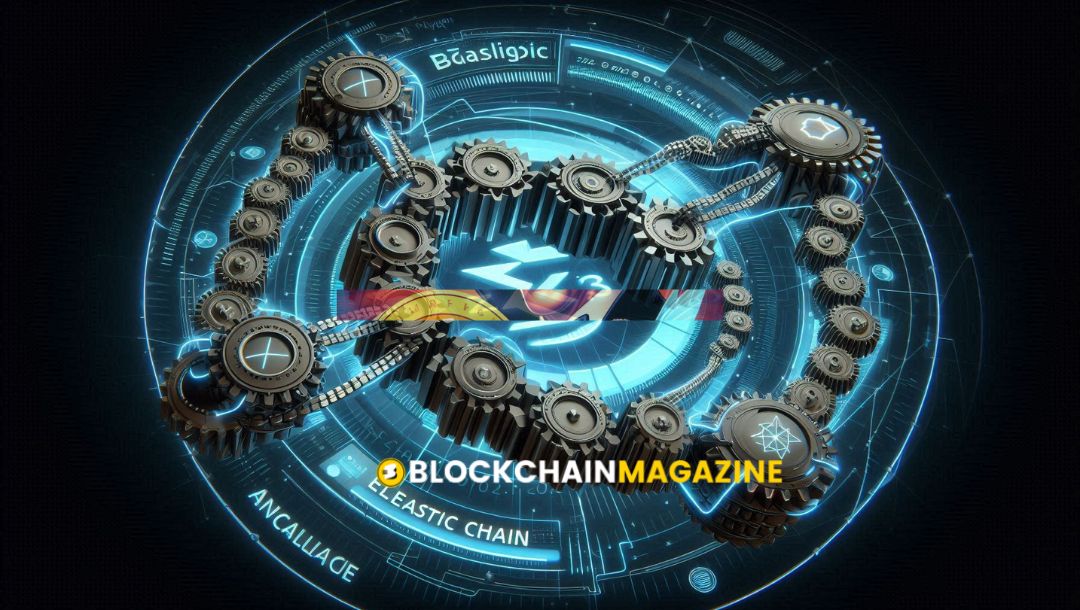Introducing ZKsync 3.0: A Revolutionary ‘Elastic Chain’ to Rival Polygon’s AggLayer
In a bold move poised to reshape the blockchain landscape, Matter Labs, the innovative minds behind the layer-2 network ZKsync, have unveiled their ambitious new roadmap: ZKsync 3.0. This initiative aspires to create a more cohesive ecosystem, featuring the groundbreaking “Elastic Chain,” a development drawing parallels with Polygon’s AggLayer, launched earlier this year.
ZKsync 3.0: The v24 Upgrade
Central to the ZKsync 3.0 vision is the v24 upgrade, released on June 7. This transformative update evolves ZKsync from a singular ZK chain into a multifaceted Elastic Chain, as elucidated in a blog post by the Matter Labs team and shared with CoinDesk.
The Elastic Chain: Seamless Multi-Chain Experience
The Elastic Chain comprises numerous chains within the ZKsync ecosystem, yet it offers users the seamless experience of interacting with a single chain. This sophisticated integration reflects Matter Labs’ dedication to enhancing user experience and functionality.
The ZK Stack: A Foundation for Custom Chains
Matter Labs introduced the ZK Stack last year, a comprehensive toolkit empowering developers to construct bespoke blockchains leveraging ZKsync’s technology. These custom chains, interconnected through the Elastic Chain, form a robust, integrated network.
The Elastic Chain Explained
Described as an “infinitely extensible network of ZK chains (including rollups, validiums, and volitions), secured by mathematical proofs and interoperable through a unified and intuitive user experience,” the Elastic Chain represents a significant advancement in blockchain interoperability. This innovation is part of a broader trend towards creating more seamless interconnections within blockchain ecosystems. Polygon’s AggLayer, introduced in January, mirrors this objective.
Core Components of the Elastic Chain
Matter Labs delineates three primary components constituting the Elastic Chain:
- Native Token Vault and Shared Router: At the heart of the network, these elements are implemented as a series of smart contracts on Ethereum. They manage network state and chain registrations, ensuring streamlined operations.
- ZK Gateway: This middleware bridges the Ethereum blockchain with ZKsync’s ZK chains, facilitating interoperability within the ZKsync ecosystem. It enables efficient communication and transactions across different chains.
Together, these components enable the ZK chains to interact and transact seamlessly, inheriting Ethereum’s security while allowing horizontal scaling. This maintains the fundamental properties that confer strength to public blockchains.
Stay informed with daily updates from Blockchain Magazine on Google News. Click here to follow us and mark as favorite: [Blockchain Magazine on Google News].
Get Blockchain Insights In Inbox
Stay ahead of the curve with expert analysis and market updates.
latest from tech
Disclaimer: Any post shared by a third-party agency are sponsored and Blockchain Magazine has no views on any such posts. The views and opinions expressed in this post are those of the clients and do not necessarily reflect the official policy or position of Blockchain Magazine. The information provided in this post is for informational purposes only and should not be considered as financial, investment, or professional advice. Blockchain Magazine does not endorse or promote any specific products, services, or companies mentioned in this posts. Readers are encouraged to conduct their own research and consult with a qualified professional before making any financial decisions. The featured image used is just a creative depiction of the title and it does not intend to hurt sentiments of any person or institution. If it hurts anyone sentiments, please do not hesitate to reach out to Blockchain Magazine.

 Bitcoin
Bitcoin  Ethereum
Ethereum  XRP
XRP  Tether
Tether  Solana
Solana  Dogecoin
Dogecoin  USDC
USDC  Cardano
Cardano  Lido Staked Ether
Lido Staked Ether  TRON
TRON  Chainlink
Chainlink  Avalanche
Avalanche  Sui
Sui  Wrapped stETH
Wrapped stETH  Wrapped Bitcoin
Wrapped Bitcoin  Stellar
Stellar  Toncoin
Toncoin  Hedera
Hedera  Shiba Inu
Shiba Inu  Polkadot
Polkadot  WETH
WETH  LEO Token
LEO Token  Bitcoin Cash
Bitcoin Cash  Litecoin
Litecoin  Hyperliquid
Hyperliquid  Bitget Token
Bitget Token  Official Trump
Official Trump  Uniswap
Uniswap  Pepe
Pepe  Wrapped eETH
Wrapped eETH  USDS
USDS  NEAR Protocol
NEAR Protocol  Ethena USDe
Ethena USDe  Aave
Aave  Aptos
Aptos  Internet Computer
Internet Computer  Ondo
Ondo  WhiteBIT Coin
WhiteBIT Coin  Ethereum Classic
Ethereum Classic  Cronos
Cronos  Monero
Monero  Mantle
Mantle  POL (ex-MATIC)
POL (ex-MATIC)  Render
Render  Dai
Dai  Algorand
Algorand  MANTRA
MANTRA  Bittensor
Bittensor 



